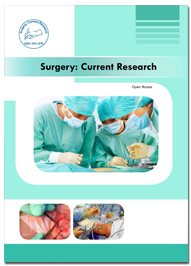Индексировано в
- Журнал GenamicsSeek
- Академические ключи
- Справочник журналов открытого доступа
- СКОПУС
- Справочник периодических изданий Ульриха
- RefSeek
- Университет Хамдарда
- ЭБСКО АЗ
- OCLC- WorldCat
- Паблоны
- Женевский фонд медицинского образования и исследований
- Google Scholar
- Web of Science (Индекс цитирования новых источников)
- Индекс Коперника
- Международный комитет редакторов медицинских журналов (ICMJE)
Полезные ссылки
Поделиться этой страницей
Флаер журнала

Журналы открытого доступа
- Биоинформатика и системная биология
- Биохимия
- Ветеринарные науки
- Генетика и молекулярная биология
- Еда и питание
- Иммунология и микробиология
- Инжиниринг
- Клинические науки
- Материаловедение
- медицинские науки
- Науки об окружающей среде
- Неврология и психология
- Общая наука
- Сельское хозяйство и аквакультура
- Сестринское дело и здравоохранение
- Управление бизнесом
- Фармацевтические науки
- Химия
Абстрактный
Guidelines for Oral Surgery and its Phenotyping Procedure
Harry smith
There is an increasing need for high-quality craniofacial standards based on 3D imaging technology given the present extensive use of 3D facial surface imaging in clinical and research settings. Creating an interactive, Webbased collection of 3D facial photos and measurements was the main objective of the 3D Facial Norms (3DFN) project. Users get access to both summary-level statistics and individual-level data, unlike other repositories, including genotypes from each individual in the collection as well as 3D facial landmark coordinates, 3D-derived anthropometric measurements, 3D facial surface photos, and genotypes. There are presently 2454 male and female participants in the 3DFN database, with ages ranging from 3 to 40. Four US locations were used to enrol the participants, who underwent screening for a history of craniofacial abnormalities. This article's objective is to introduce readers to the 3DFN repository by giving a basic overview of the project, outlining the justification for the database's construction, and outlining the procedures utilised to gather the data. There is an online supplement that provides summary statistics (means and standard deviations) by sex and age as well as growth curves for each anthropometric measurement in the 3DFN dataset. Clinicians can use these summary statistics and growth curves to evaluate craniofacial dysmorphology